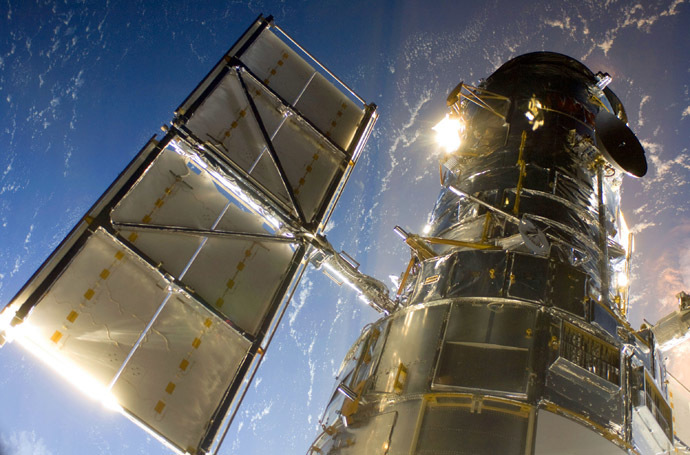
Hubble telescope captures 10,000 galaxies in one amazing shot
RT
Billed as “the most comprehensive picture ever assembled of the evolving universe,” the latest image captured by the Hubble Space Telescope is an explosion of color that depicts thousands of galaxies in the universe.
Released on Tuesday, the beautiful image is part of a survey exploring the Hubble Ultra Deep Field – a portion of space in the constellation Fornax that astronomers have been compiling for more than 10 years – and features approximately 10,000 galaxies.
While previous images of the Hubble Ultra Deep Field (HUDF) were able to capture wavelengths of light in the visible and near-infrared spectrum to the far ultraviolet, images from the near-ultraviolet spectrum were noticeably lacking. As noted by the European Space Agency in a press release, astronomers were able to add the near-ultraviolet images with the use of Hubble’s Wide Field Camera 3, resulting in a portrait that shows far more than ever before.
"The lack of information from ultraviolet light made studying galaxies in the HUDF like trying to understand the history of families without knowing about the grade-school children," said Caltech's Harry Teplitz, principal investigator for a project called Ultraviolet Coverage of the Hubble Ultra Deep Field, according to NBC News.
Amazingly, the galaxies contained within the image stretch back all the way to “within a few hundred million years” of the Big Bang. The photo itself was constructed using 841 Hubble orbits between 2003 and 2012.


"The galaxies show every possible shape and size,” wrote astronomer Phil Plait at Slate. "Many are distorted, victims of collisions with other galaxies, their mutual gravity pulling them into weird shapes like taffy quadrillions of kilometers across. Many are very blue, showing active star formation, while others are exceedingly red, probably galaxies much farther away, their light taking far longer to reach us. Note that most of the very red galaxies are smaller dots, another indication of their tremendous distance."
Plait added that this image alone could take scientists years, perhaps decades, to study – hopefully revealing how small galaxies began to form – but added that even then, the HUDF’s most powerful impact may end up being on the general public.
“To look upon such beauty and to see how vast our Universe is, how deep it is, how complex, and how spectacular, and yet to know that we can see it, we can study it, and, through science, we can understand it … that may yet prove to be the most profound influence Hubble will have on history.”
http://rt.com/usa/163652-hubble-galaxies-one-shot-nasa/
